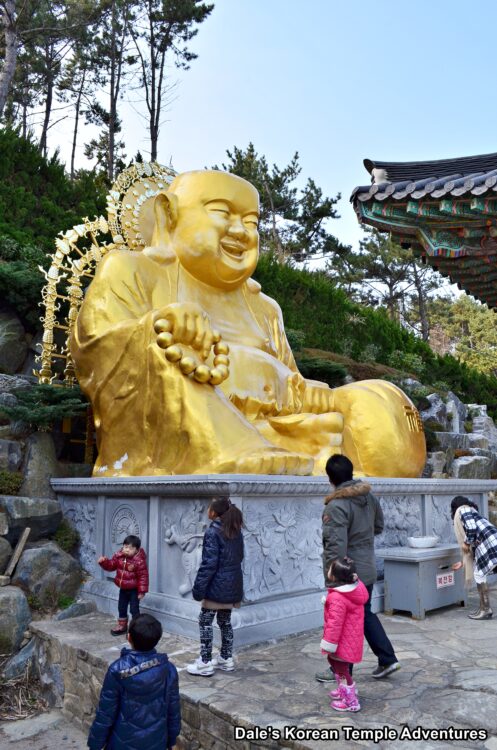
This posts contains affiliate links. I receive a percentage of sales, if you purchase the item after clicking on an advertising link at no expense to you. This will help keep the website running. Thanks, as always, for your support!
The History of Podae-Hwasang
Until recently, I had no idea that Podae-hwasang even existed in Buddhism. It was only after researching him a bit more that I found out who the easily misidentified jovial figure was. Sometimes, he can be confused for the Buddha, but he’s in fact Podae-hwasang.
Podae-hwasang, who is better known as Budai or Pu-Tai in Chinese, is a disguised monk. Podae-hwasang is believed to be an incarnation of Mireuk-bul (The Future Buddha). The name Budai, in Chinese, means “hempen sack” (more on that later).
Podae-hwasang first appeared in 10th century Chinese folktales. It’s believed that Podae-hwasang was a monk from Huyang, China. He was born in Myeongju, Bonghwa in China (or Ch’i-t’zu, from Fenghua, in what is now Zhejiang province in Chinese). His name, at his birth, was Gyecha. At this time, there was a form of Buddhism in China called Mani, and his Buddhist name was Cha, even though he was also called Seodal. And his home temple was Akrimsa Temple.
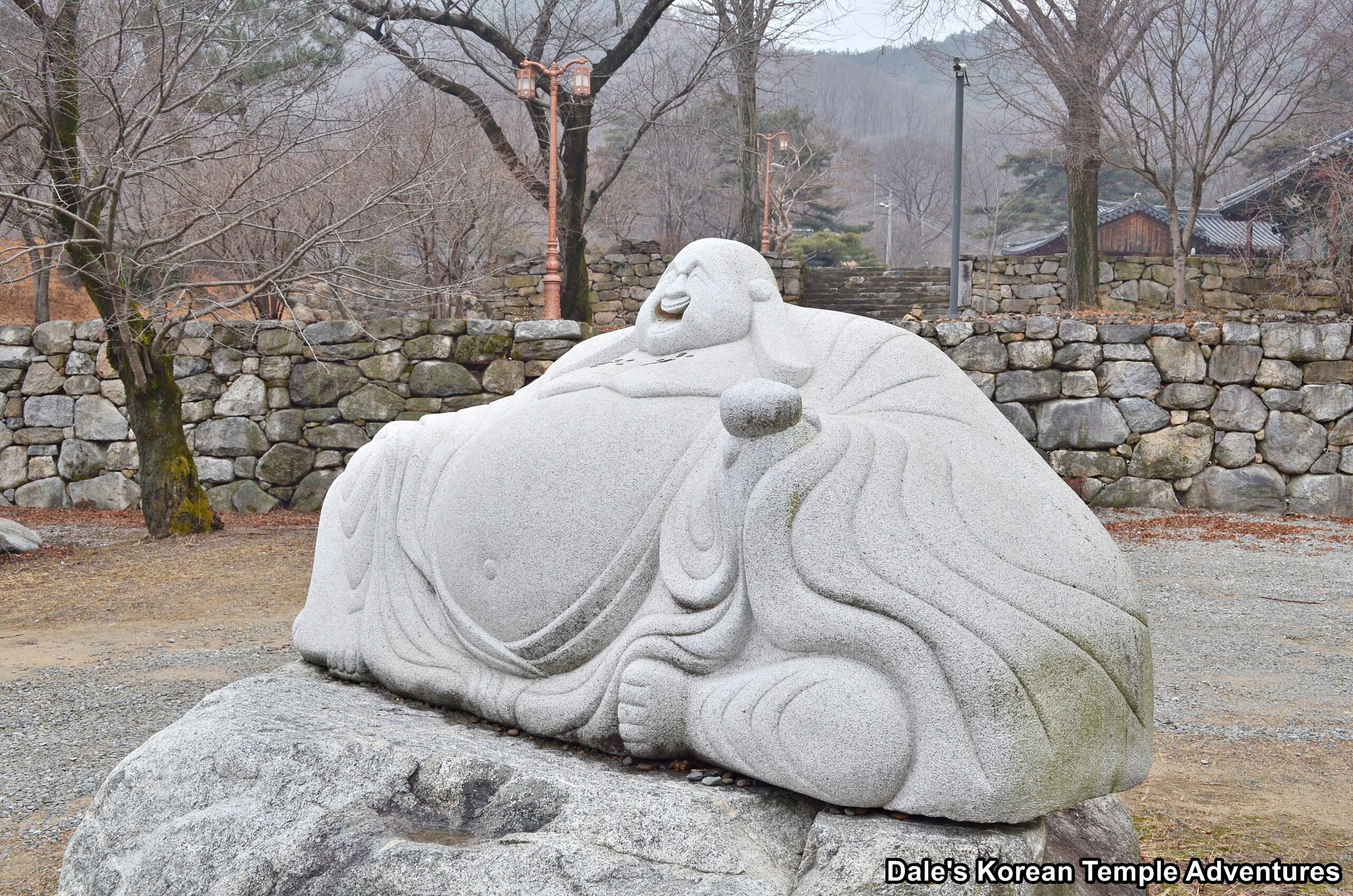
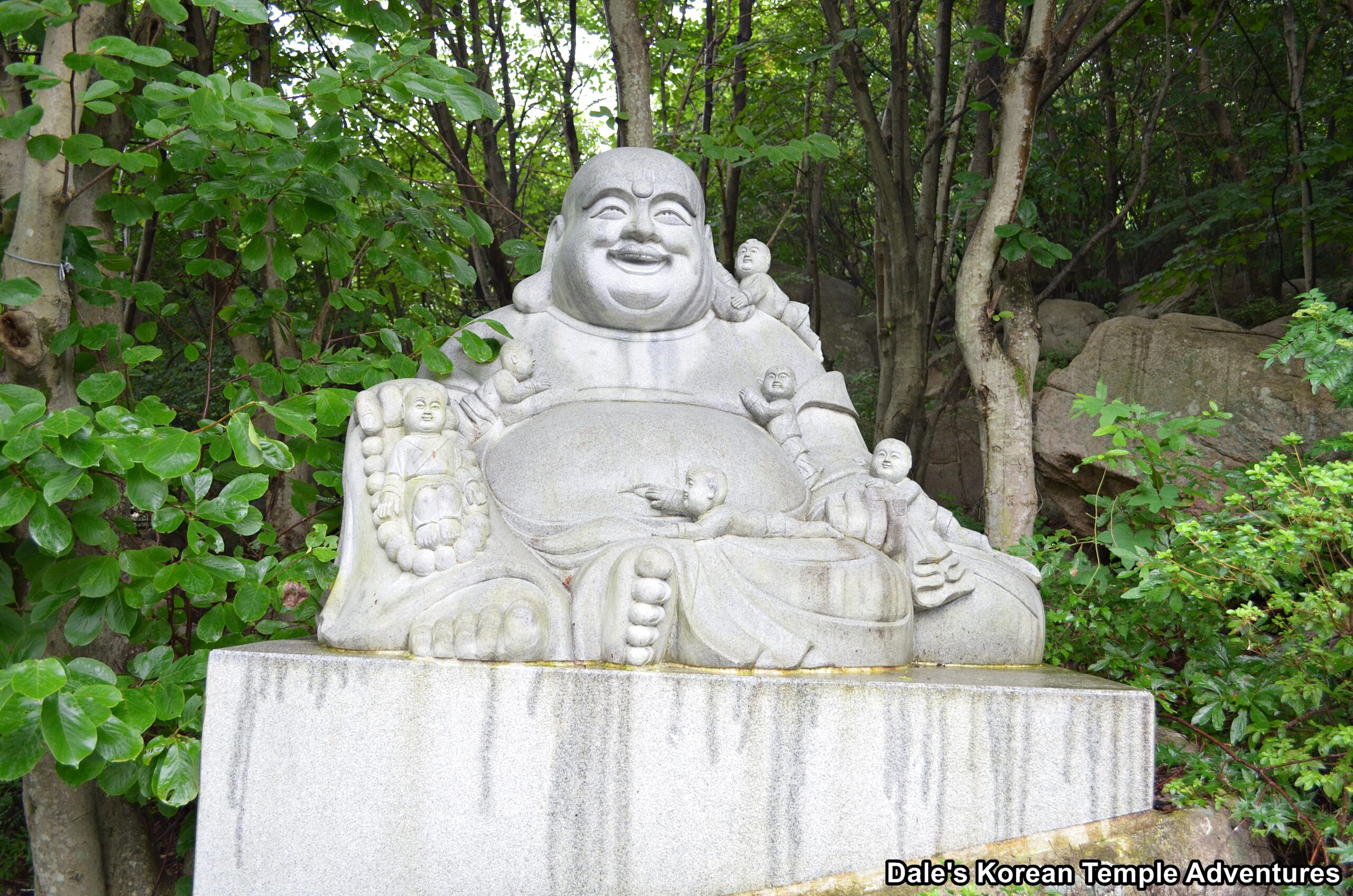
At his death in 916 A.D., Podae-hwasang entered nirvana. He left behind four poems/songs as he entered nirvana on a rock. It was at his death that he recited:
- Maitreya [Mireuk-bul], true Maitreya
- Reborn innumerable times
- From time to time manifested among men
- The men of the age do no recognize him.
It’s from these words that he revealed himself to be Mireuk-bul. So it’s from these final words that Podae-hwasang came to be associated with the Future Buddha.
Podae-Hwasang Appearance
Physically, Podae-hwasang appears to be chubby and has a belly like a balloon. He’s bald and wears a monk’s robe. Also, he’s always depicted as either smiling or laughing. He was known to wander around the countryside with a cane. It was from his cane that he hung a sack. The sack had a variety of things in it; so if people needed or wanted something, he could always offer things to them. Additionally, the sack carried sweets for children, so he’s often depicted in the presence of children.
Not only could Podae-hwasang predict the weather, but he could also predict good and back luck. Amazingly, he was never wrong. In addition to his ability to predict things, he represents happiness and generosity. He also protects children, the poor, and the weak. It’s believed that by rubbing his belly that it brings wealth, good luck, and prosperity.
Where Can I Find Podae-Hwasang?
At a Korean Buddhist temple, you can typically find Podae-hwasang either in painted or statue form. If he’s a statue, he’s usually rendered as plump, jovial and surrounded by children. He can be holding either prayer beads or a fan, and he has the iconic hempen sack nearby. Podae-hwasang also appears like this in paintings if he’s on his own; however, he can sometimes be seen in the final painting of the Shimu-do (Ox-Herding Murals) in the form of the master returning to a village or marketplace.
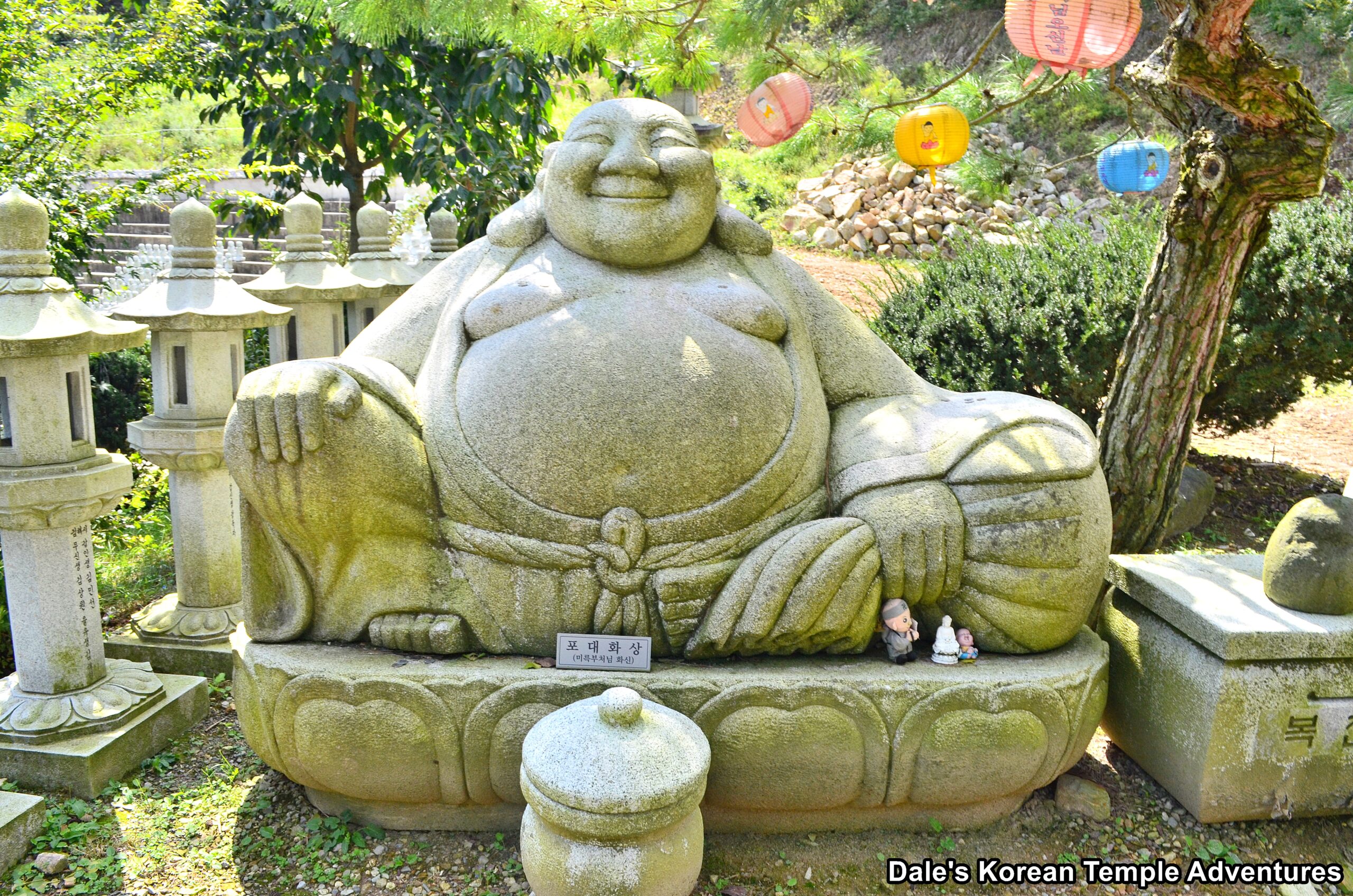
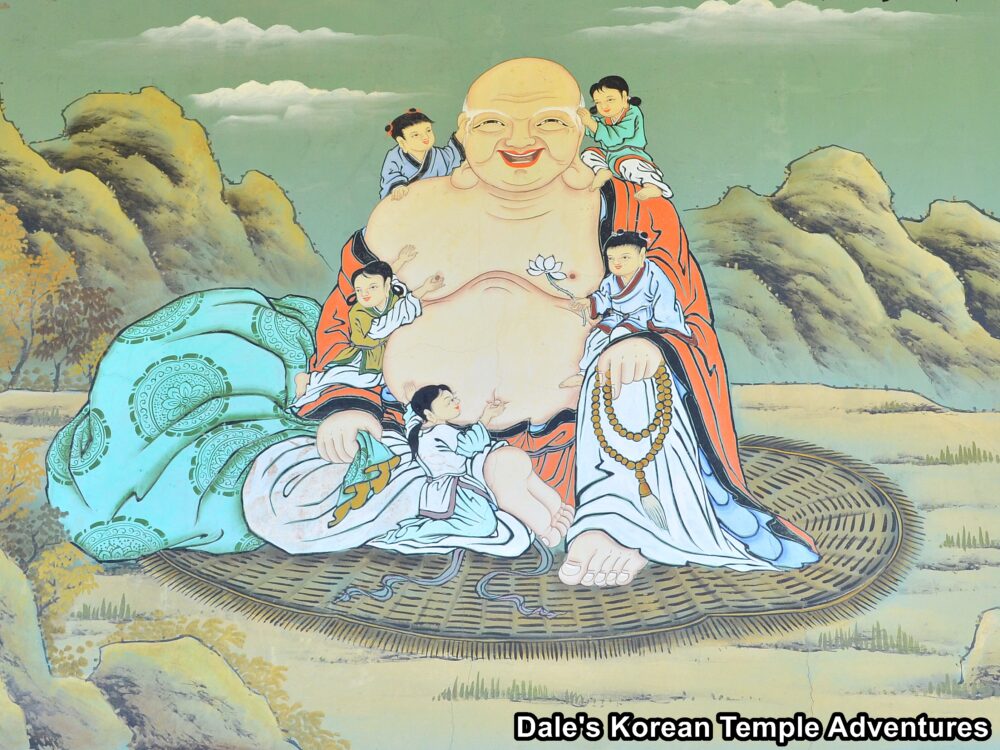
Great Examples
You can find Podae-hwasang at such temples as Haedong Yonggungsa Temple in Gijang-gun, Busan; Unmunsa Temple in Cheongdo, Gyeongsangbuk-do; Sudasa Temple in Gumi, Gyeongsangbuk-do; Yongmunsa Temple in Yecheon, Gyeongsangbuk-do; and Chunghyosa Temple in Yeongcheon, Gyeongsangbuk-do.
So the next time you’re out at a Korean Buddhist temple, you might be lucky enough to find this chubby figure. And if you rub his belly or pray to him, you might be rewarded with wealth, good luck, and/or prosperity.
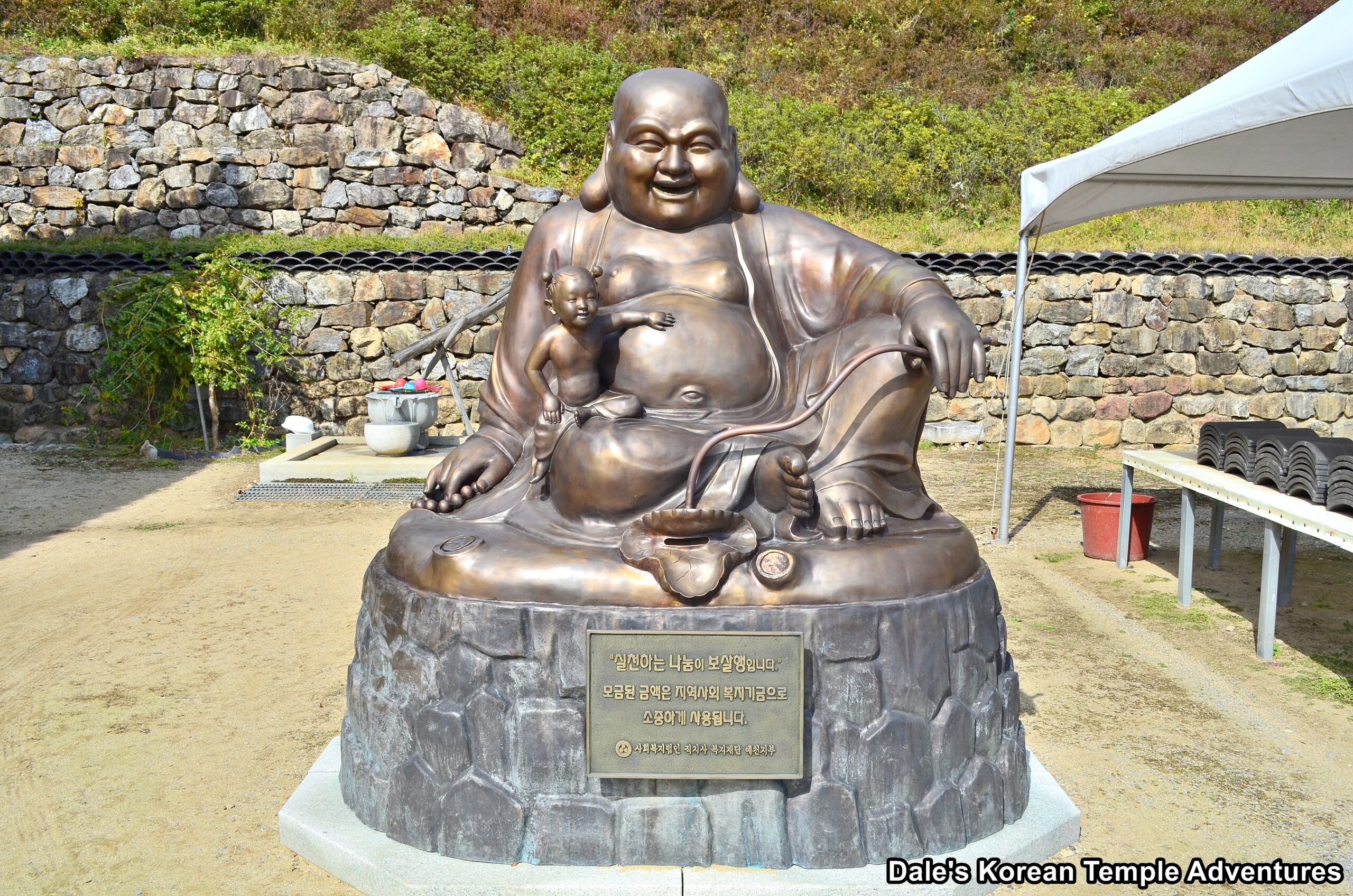
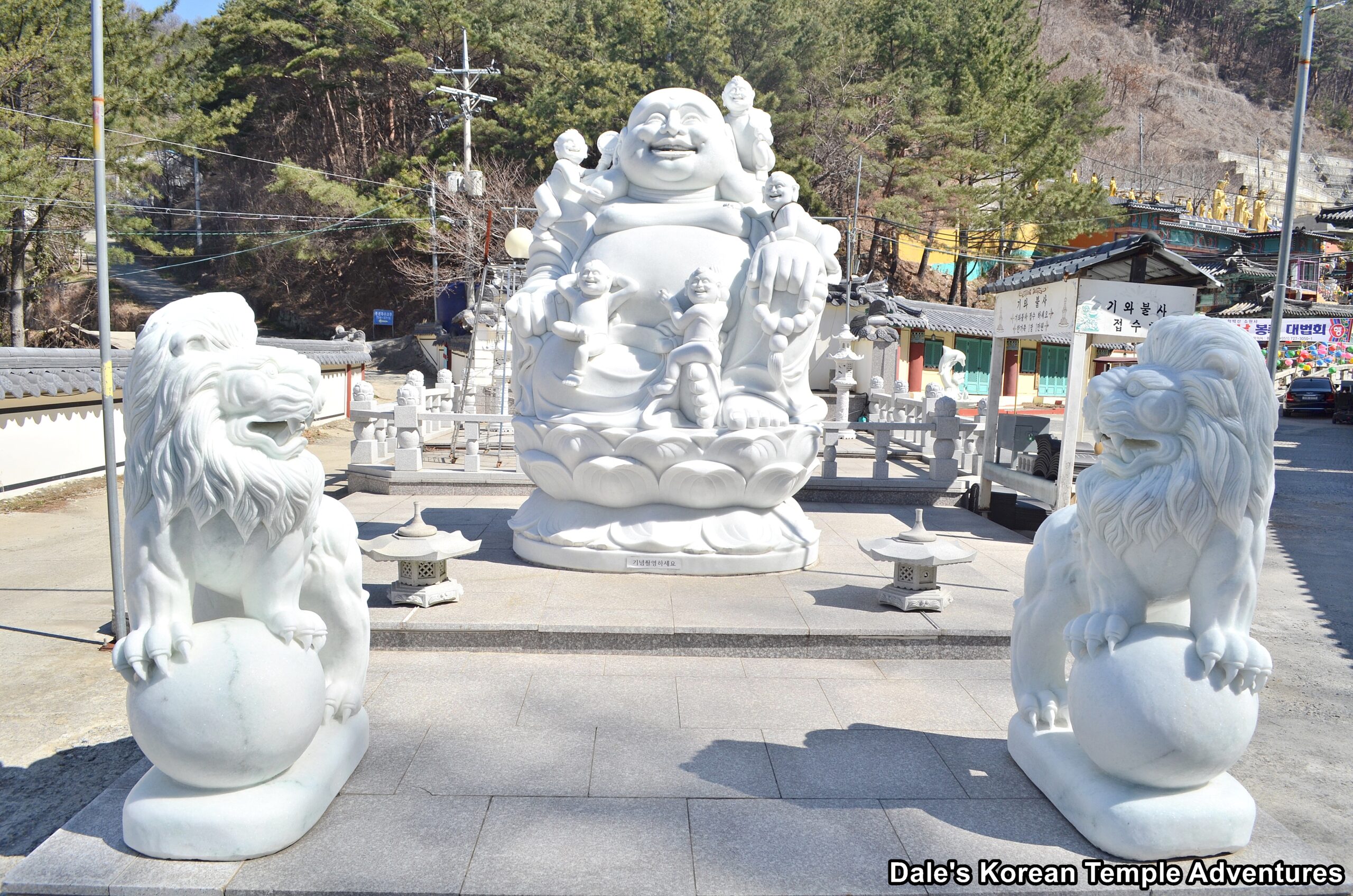
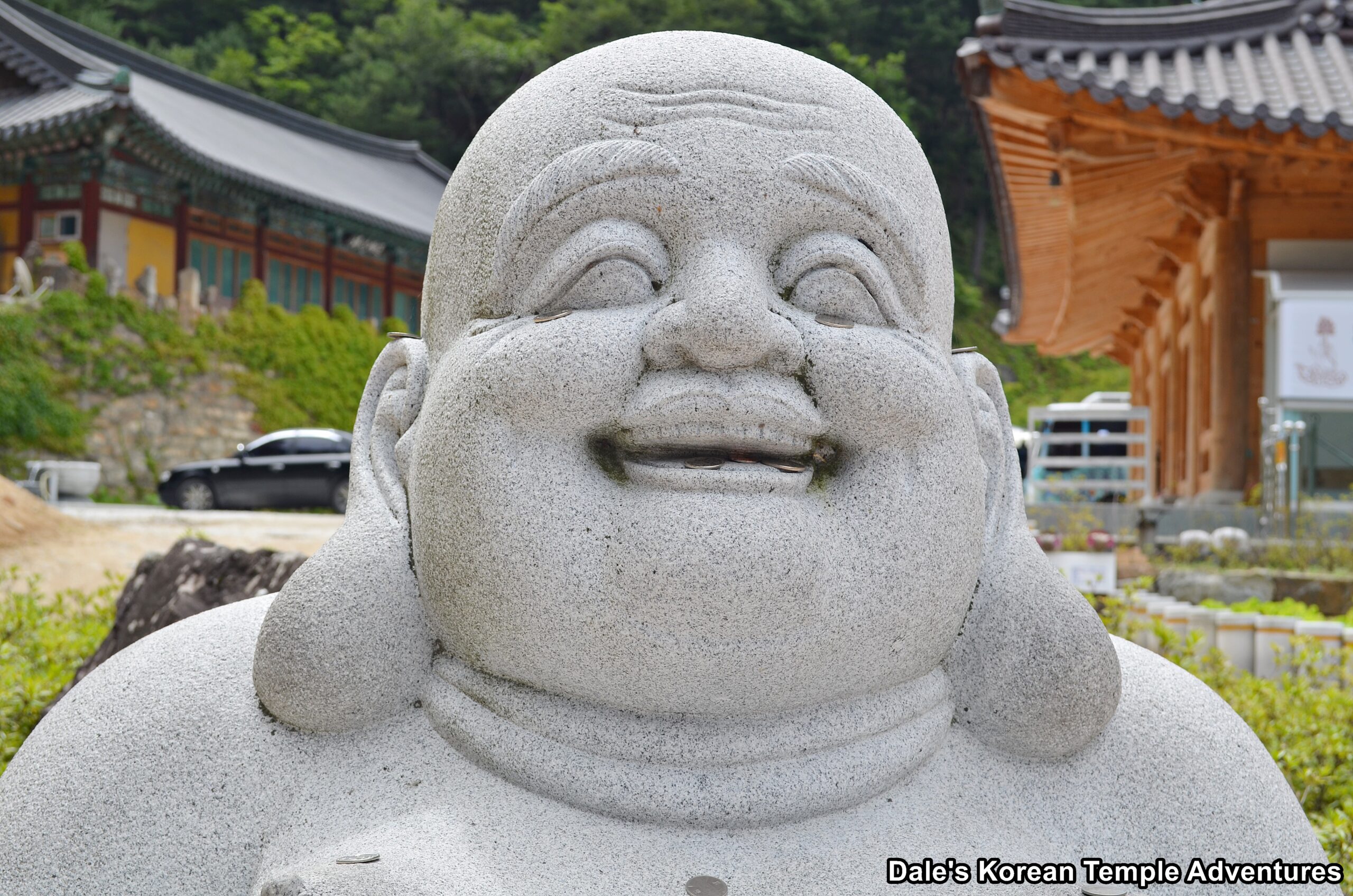


Recent comments